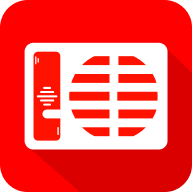什么是滤波器(英文)?
作者:佚名 来源:未知 时间:2025-01-13
滤波器英文详解

In the realm of signal processing and electronics, the term "filter" is crucial, encompassing devices or processes that modify, enhance, or suppress specific components of a signal. When discussing filters in an English context, it's essential to understand their fundamental principles, types, applications, and the terminology associated with them. This article aims to provide a comprehensive overview of filters in English, catering to those seeking to deepen their understanding.

Filters are essentially circuits or algorithms designed to alter the amplitude and/or phase characteristics of an electrical signal as a function of frequency. They play a pivotal role in signal conditioning, noise reduction, and feature extraction, among other applications. By selectively passing or blocking certain frequency components, filters enable the enhancement of desired signals while suppressing undesired ones.

Types of Filters

Filters are broadly classified into two categories based on their frequency response: analog and digital.
Analog Filters
Analog filters manipulate continuous-time, analog signals. They can be further categorized into:
1. Passive Filters: These filters utilize resistors, capacitors, and inductors to alter signals. They are cost-effective and do not require power to operate. However, they may introduce signal loss and are limited in terms of precision and complexity.
2. Active Filters: Incorporating active components like transistors or operational amplifiers, active filters can amplify signals while filtering. They offer higher precision and flexibility but consume power and may be more complex to design.
Within these categories, analog filters are further subclassified based on their frequency response profiles:
Low-Pass Filter (LPF): Allows frequencies below a cut-off point to pass while attenuating higher frequencies. Commonly used in audio systems to remove high-frequency noise.
High-Pass Filter (HPF): Passes frequencies above a cut-off point while blocking lower ones. Useful in eliminating low-frequency hum and bass boost.
Band-Pass Filter (BPF): Permits a specific range of frequencies to pass through, attenuating frequencies above and below this band. Essential in communication systems for selecting desired signal channels.
Band-Stop Filter (BSF) or Notch Filter: Blocks a specific frequency band while allowing others to pass. Often applied to remove interference or harmonic distortion.
All-Pass Filter (APF): Attenuates or delays all frequencies equally, altering the signal's phase without affecting its amplitude. Utilized in phase equalization and feedback systems.
Digital Filters
Digital filters operate on discrete-time signals, typically implemented via software algorithms or digital signal processors (DSPs). They offer numerous advantages over analog filters, including precision, stability, and ease of programming.
Finite Impulse Response (FIR) Filters: Characterized by a finite number of filter coefficients or taps. They offer linear phase response and are stable by design. Commonly used in applications requiring minimal phase distortion.
Infinite Impulse Response (IIR) Filters: Have feedback loops that create an infinite impulse response. They can mimic the frequency responses of analog filters and are often more computationally efficient than FIRs for equivalent performance.
Design and Characteristics
The design of a filter involves specifying its frequency response, phase response, and group delay. The frequency response defines how the filter attenuates or passes different frequency components. Phase response indicates how the filter shifts the phase of the signal as a function of frequency, while group delay measures the delay introduced across a range of frequencies.
Filters are characterized by several key parameters:
Cut-Off Frequency: The frequency at which the filter's response changes most rapidly. For LPFs and HPFs, it marks the transition from passband to stopband.
Roll-Off: The rate of attenuation as frequency moves away from the cut-off point. Steeper roll-offs provide sharper transitions between passband and stopband.
Bandwidth: For BPFs and BSFs, it represents the range of frequencies that are passed or blocked.
Ripple: Deviations from the ideal flat response within the passband or stopband. Lower ripple indicates better performance.
Order: The number of reactive components (inductors or capacitors) in analog filters or the number of taps in FIR filters. Higher-order filters offer steeper roll-offs but may introduce more phase distortion and complexity.
Applications
Filters are ubiquitous in electronic systems, serving a multitude of functions:
Audio and Sound Processing: Equalizers, noise reducers, and voice effects all rely on filters to shape sound.
Telecommunications: Filters are crucial for frequency division multiplexing, signal conditioning, and interference suppression.
Imaging and Signal Processing: In medical imaging, radar, and other fields, filters help extract features, reduce noise, and enhance image quality.
Control Systems: Filters stabilize systems by reducing noise and improving signal integrity.
Instrumentation: Measurement accuracy improves with filters that suppress unwanted frequencies.
Terminology
Understanding filters necessitates familiarity with specific terminology:
Frequency Domain: Represents signals as functions of frequency, useful for analyzing filter responses.
Time Domain: Describes signals as functions of time, relevant for understanding real-time behavior.
Pole and Zero: Poles are frequencies where the filter's gain becomes infinite, while zeros are frequencies where the gain is zero. They determine the filter's frequency response.
Bode Plot: A graphical representation of a filter's magnitude and phase responses as functions of frequency.
Group Delay: Measures the delay introduced by a filter, crucial for maintaining signal coherence in time-sensitive applications.
Q-Factor or Quality Factor: Indicates the bandwidth relative to the center frequency of a resonant circuit, affecting selectivity and damping.
Phase Linearity: Ensures that different frequency components experience consistent delay, minimizing phase distortion.
Conclusion
Filters are indispensable tools in the realm of signal processing and electronics, enabling the manipulation of signals to meet specific requirements. By understanding their types, design characteristics, and applications, one can harness their full potential. Whether dealing with analog or digital implementations, filters play a critical role in enhancing signal quality, reducing noise, and enabling the extraction of useful information from complex signals.
With a robust grasp of filter terminology and principles, professionals and enthusiasts alike can design, analyze, and implement filters tailored to their needs. Whether in audio engineering, telecommunications, imaging, control systems, or beyond, filters remain a cornerstone of modern electronics and signal processing.
- 上一篇: 轻松解锁:解决请求操作需要提升权限的妙招
- 下一篇: 揭秘《蜗居》:背后的真实原型故事是什么?
































